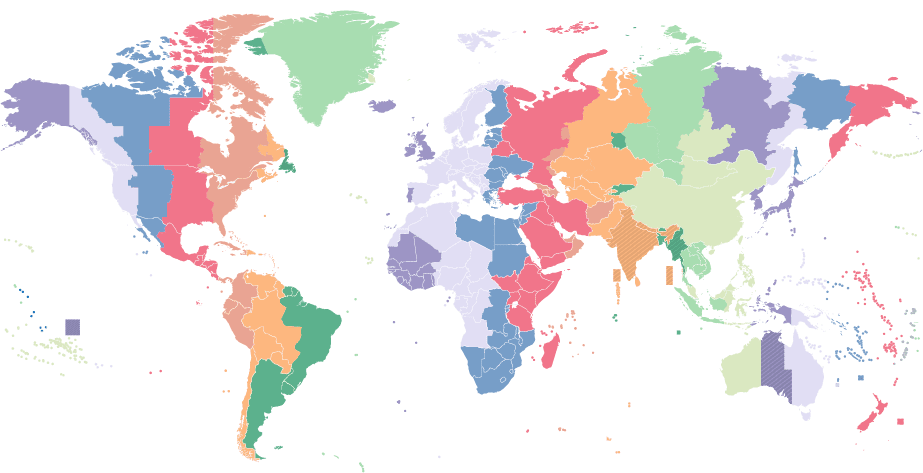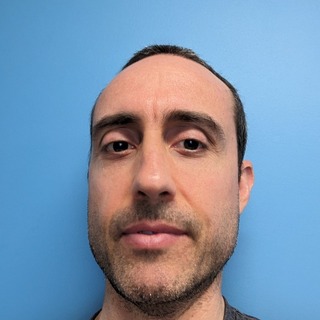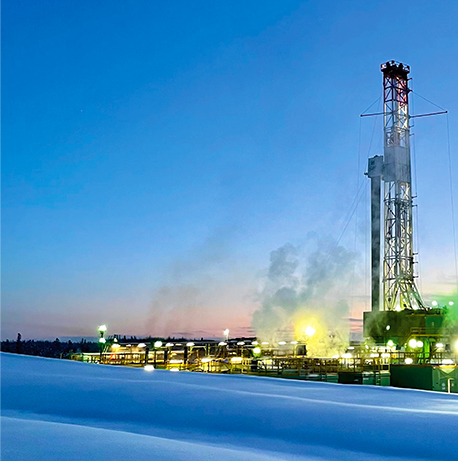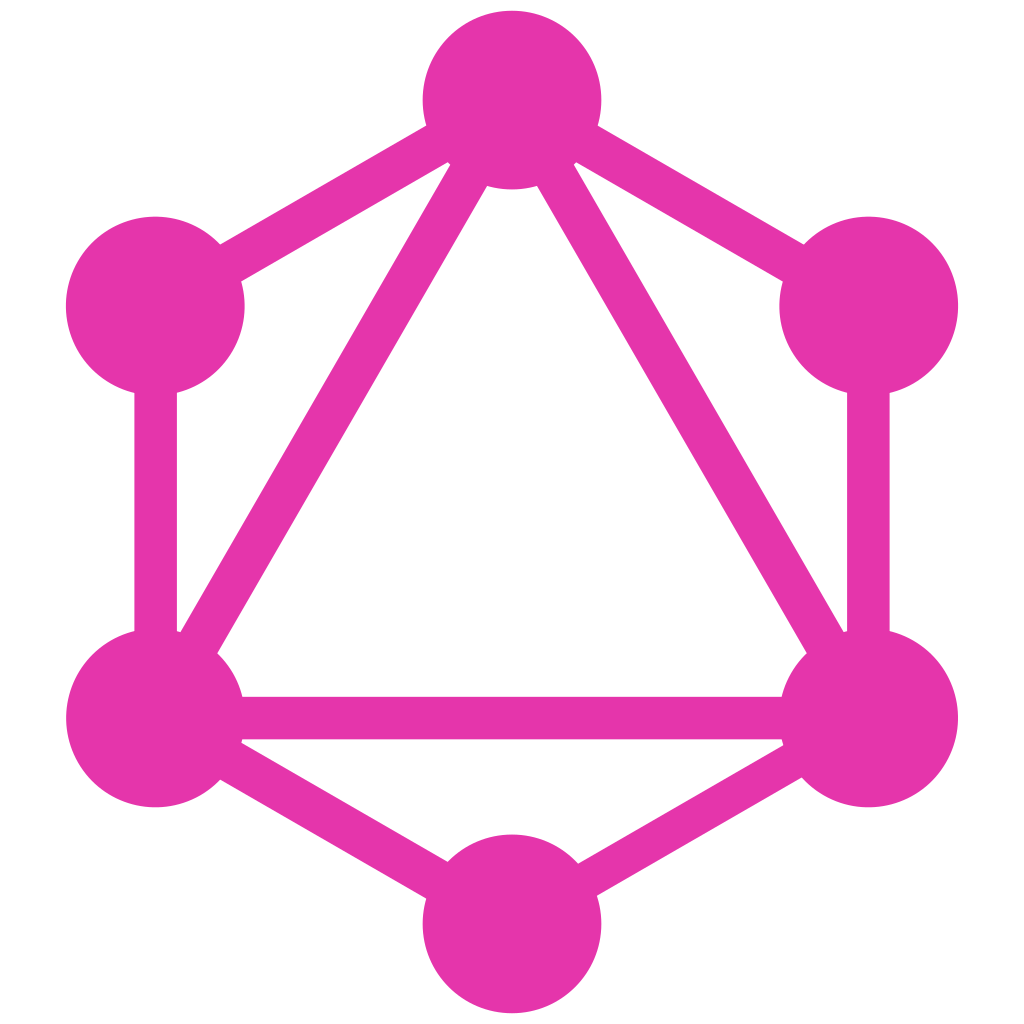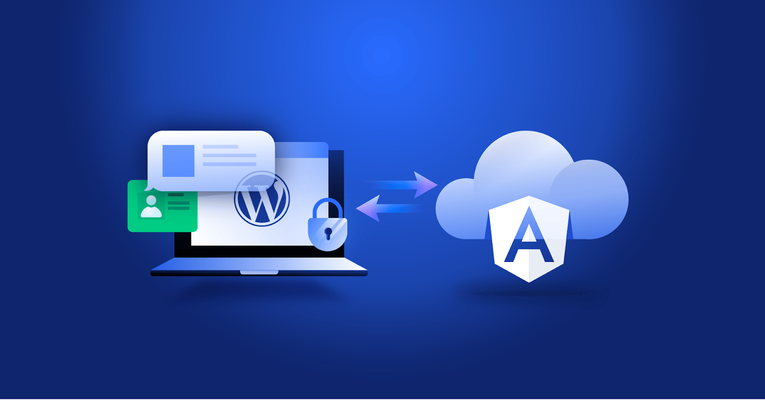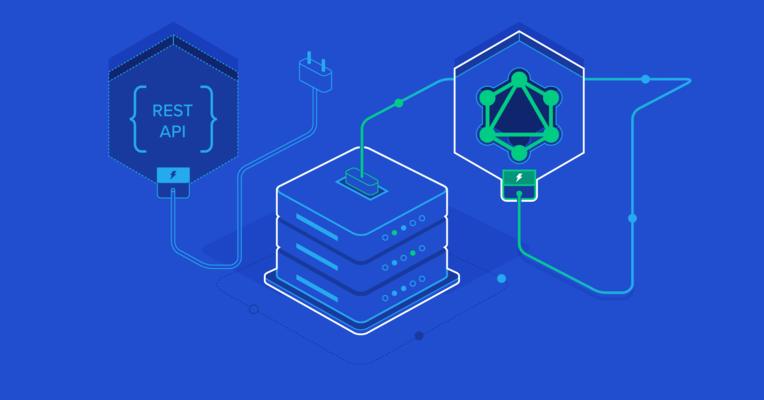Demand for GraphQL Developers Is Steadily Increasing
Since Meta open-sourced the GraphQL data query language for APIs in 2015, it has rapidly gained popularity among developers and companies worldwide. Its ability to enhance the speed and efficiency of apps, web applications, and websites by optimizing data retrieval positioned it as a valuable tool in modern web development. Adoption rates have steadily risen, with estimates suggesting that more than 50% of enterprises will use it in production by 2025, up from less than 10% in 2021.
Think of it as a tool that lets applications request precisely the information they need from a server in a single request. This makes data fetching more efficient and flexible than traditional methods like REST APIs, which have multiple endpoints for specific data. For instance, imagine you’re developing a mobile app that displays a user’s profile, recent posts, and comments. Using a REST API, you’d need separate requests for user details, posts, and comments for each post, leading to potential over-fetching or under-fetching of data and increased load times. With GraphQL, you can retrieve all this information with a single call.
But, finding top talent can be challenging due to the specialized skills required to design, implement, and maintain GraphQL schemas and servers. Expertise in this powerful technology involves a deep understanding of API design principles, server-side development, and client-side data-fetching strategies. This guide outlines the necessary skills, job description tips, and sample interview questions to support your search for experienced GraphQL engineers who will help you achieve your business objectives.
What Attributes Distinguish Quality GraphQL Developers From Others?
GraphQL experts are instrumental in bridging the gap between clients and servers, enabling seamless data flow and improving overall application performance. But what sets a high-quality GraphQL developer apart from others?
A top-tier developer possesses:
Deep understanding of GraphQL core principles: Proficient developers have a solid grasp of schemas, types, queries, mutations, and subscriptions, designing intuitive and scalable data structures that accurately represent your application’s data models.
Expertise in resolver functions: Skilled GraphQL programmers write efficient resolver functions that integrate with various data sources—such as databases, microservices, or external APIs—to fetch and manipulate information effectively.
Performance optimization skills: Utilizing techniques like batching and caching, seasoned developers reduce latency and minimize redundant database calls, often employing tools like DataLoader to prevent the N+1 query problem.
Security consciousness: Implementing measures to protect against malicious queries, experienced developers can set query depth limits and perform complexity analysis to prevent denial-of-service attacks, ensuring your API is robust and secure.
Proficiency with GraphQL tools and ecosystem: Familiarity with server implementations like Apollo Server or Express-GraphQL and client-side libraries like Apollo Client or Relay enables developers to leverage tools like GraphiQL or GraphQL Playground for testing and debugging.
Integration skills with front-end technologies: Their ability to integrate GraphQL with front-end frameworks like React, React Native, Angular, or Vue.js allows for a cohesive app development process across the tech stack.
Beyond the technical skill set, exceptional GraphQL programmers show solid problem-solving abilities and good communication skills. They collaborate effectively with front-end developers, project managers, product managers, and other stakeholders to understand data requirements and deliver solutions that align with business objectives. An outstanding capacity to explain complex concepts in understandable terms is desirable, as it fosters better teamwork and facilitates smoother project progression.
By hiring a skilled developer who embodies these qualities, you invest in someone capable of significantly enhancing your software solutions’ performance and scalability. Their expertise ensures that your APIs are efficient, robust, and adaptable to evolving business needs, positioning your projects for long-term success and providing users with a superior experience.
How Can You Identify the Ideal GraphQL Developer for You?
Identifying the right developer for your team starts with understanding your project requirements and the challenges you aim to address. Are you building a new GraphQL API from scratch, or do you need to optimize an existing one? Do you require integration with specific databases or front-end frameworks? Once you’ve defined your requirements, you can identify the appropriate candidate experience level for your initiative.
Junior Developer
A junior developer is typically just beginning their career, often with 1-2 years of experience working with JavaScript or TypeScript and some exposure to GraphQL. They may have worked on smaller projects or been part of a larger team where they contributed to more straightforward GraphQL queries and mutations. While they have a basic understanding of writing and integrating GraphQL APIs, they may not have significant experience optimizing schemas or handling complex, nested data structures.
A junior developer will often require oversight from more experienced team members to ensure their code aligns with best practices, particularly regarding performance optimization and security. They may also need help understanding advanced concepts like schema federation, query batching, or handling circular dependencies.
Consider hiring a junior developer when you have a well-established infrastructure and the project’s complexity is low, allowing them to focus on straightforward features or maintenance. However, expect to invest in their training and provide strong mentorship to ensure a smooth and risk-free integration into your team.
Mid-level Developer
Mid-level developers have a solid grasp of the technology, typically with 3-5 years of experience, and have worked on a range of projects, including larger-scale applications. They are comfortable designing queries, mutations, and subscriptions, as well as building GraphQL servers using libraries like Apollo Server or Express-GraphQL. A mid-level developer can optimize queries to minimize over-fetching and under-fetching, understand pagination and filtering, and manage GraphQL-specific errors and security issues, such as controlling access to data via field-level authorization.
These developers are likely proficient in designing and implementing schema-first GraphQL APIs, writing resolvers, and working with databases or external APIs to provide data to the client. They also have a good understanding of the Apollo or Relay client libraries, which allows them to work on client- and server-side implementations.
Consider hiring a mid-level developer when your project is moderately complex and requires someone who can take ownership of API development while working relatively independently. A mid-level developer can mentor a junior team member while still benefiting from mentorship themselves, contribute to architectural discussions, and provide insights on scaling as the project grows. They balance autonomous work with team integration and can handle most challenges in GraphQL software development, though they may need guidance on highly complex issues like advanced performance tuning or resolving edge cases in large-scale APIs.
Senior Developer
Senior developers have extensive backend experience with a deep focus on GraphQL. They excel at complex tasks like designing highly scalable APIs, optimizing performance, integrating GraphQL into complex systems, and handling advanced use cases such as real-time updates with subscriptions and schema federation across microservices. They have a deep understanding of schema design, creating modular and maintainable schemas that ensure the API is flexible and performant. GraphQL experts anticipate potential issues, architect systems that scale efficiently, and often take on leadership roles by mentoring team members and guiding strategic decisions about the architecture.
Additionally, senior developers are adept at handling complex backend integrations, working seamlessly with microservices to build scalable and efficient systems. They are comfortable with end-to-end development, from the backend to the client, and have extensive knowledge of relevant technologies like caching, load balancing, and API versioning in a GraphQL context. Senior developers will typically have an understanding of the back-end environment, such as leveraging Docker and Kubernetes for containerized deployments on cloud environments like AWS, Azure, or GCP.
Consider hiring a senior developer when your project requires deep GraphQL expertise for complex tasks and a technical leader to establish best practices. Their ability to drive robust, scalable solutions makes them invaluable for applications demanding advanced solutions and optimizations, especially when real-time updates and complex schema designs are involved. Startups that are designing products from scratch often benefit from senior developers. Larger companies with established teams and methodologies will have an easier time onboarding less experienced developers; however, the presence of senior developers is highly recommended for complex projects.
Common Use Cases to Consider
When hiring a GraphQL engineer, keep in mind your project’s specific use cases. For example:
-
Microservices architecture: If you’re integrating multiple services, look for mid-level to senior developers with experience in schema federation and stitching.
-
Real-time data: If your application requires real-time data updates, like with chat apps or collaborative platforms, ensure that your developer is proficient with GraphQL subscriptions.
-
Scalability: For projects expecting rapid growth or high user traffic, senior developers with expertise in performance tuning and caching are essential.
-
Front-end collaboration: Developers who understand how GraphQL integrates with front-end frameworks (like React.js or Vue) will be more effective in creating seamless, efficient client-server communication.
Understanding these distinctions will help you identify the right developer for your team, ensuring you make the most of the technology’s powerful capabilities.
How to Write a GraphQL Developer Job Description for Your Project
When writing the job description, start by clearly outlining the project’s objectives and the role the developer will play in achieving them. Highlight the technical skills necessary for the role, such as expertise in building and maintaining GraphQL APIs, schema design, and experience with client-side libraries like Apollo or Relay. Additionally, list complementary skills like proficiency in JavaScript or TypeScript, familiarity with backend frameworks, and database experience. The more detailed your job description is, the more streamlined the hiring process will be.
You can adjust this example to your own needs:
-
Required Skills:
- Strong proficiency in GraphQL and its core principles.
- Experience with GraphQL server libraries like Apollo Server or Express-GraphQL.
- Back-end experience with programming languages like JavaScript/TypeScript (Node.js), PHP, Python, Java, or Ruby.
- Knowledge of SQL and NoSQL databases. Examples include PostgreSQL (SQL) or MongoDB (NoSQL).
- Familiarity with front-end technologies and frameworks (React, Angular, Vue.js).
- Experience with version control systems such as GitHub.
Be specific about the project’s complexity. Is the developer working on building a new API from scratch, integrating GraphQL into an existing system, or optimizing queries for performance? Including this level of detail will help the candidates in the talent pool self-assess their fit for the role. Mention any additional responsibilities, such as mentoring junior developers or collaborating with front-end development teams.
It should look like this:
-
Responsibilities:
- Design and implement GraphQL schemas and resolvers.
- Optimize APIs for performance and scalability.
- Integrate GraphQL with existing data sources and front-end applications.
- Ensure API security and implement best practices.
- Collaborate with cross-functional teams to understand data requirements.
You can also ask for specific qualifications, like a bachelor’s degree in Computer Science or a related field (optional, depending on requirements) or proven experience developing GraphQL APIs. Remember to mention the working conditions (full-time, part-time, remote, or on-site) and any time zone or schedule requirements.
Potential job openings could include positions like “Senior GraphQL Software Engineer for Large-Scale APIs,” “Full-stack Developer with GraphQL Expertise,” or “GraphQL Specialist for Data-Driven Applications.
What Are the Most Important GraphQL Interview Questions?
When vetting candidates, you’ll want to assess their technical expertise and problem-solving abilities within the GraphQL ecosystem. The following questions are designed to evaluate a candidate’s understanding of GraphQL principles, hands-on experience, and ability to navigate common challenges.
Can you explain the difference between REST and GraphQL, and when you would choose one over the other?
This question tests the candidate’s understanding of GraphQL’s advantages compared to REST. A desirable answer would explain that GraphQL allows clients to specify the data they need. The candidate should also note that GraphQL provides more flexibility than REST for evolving APIs. However, they should mention that REST might still be preferable for simpler or more static APIs. An ideal candidate will have a balanced perspective and know when to apply each technology based on project needs.
How do you design a schema in GraphQL, and what considerations do you take into account?
A strong response should highlight the importance of creating a clear and scalable schema that reflects the business logic. The candidate should mention considerations like ensuring query performance, avoiding deeply nested fields to prevent expensive queries, and designing reusable fragments for client-side use. They might also talk about schema evolution strategies, such as using schema stitching or federation to handle microservices or multiple teams contributing to the same API.
How do you handle performance issues?
Here, you’re looking for candidates who are aware of common performance challenges, such as N+1 query problems. A knowledgeable response would include strategies like using DataLoader to batch and cache requests, optimizing resolvers, and applying pagination to limit the amount of data retrieved. They should also mention the importance of monitoring and analyzing query performance using tools like Apollo Studio or GraphQL-specific performance tracking tools.
Can you describe your experience with implementing security in a GraphQL API?
GraphQL has specific security concerns, such as query complexity and depth, which could be exploited. Candidates should discuss techniques like limiting query depth, setting timeout thresholds, and rate limiting. They might also mention handling authorization and authentication at the field or query level, often through tools like middleware or third-party libraries such as Apollo’s @auth directive.
How do you manage versioning in GraphQL?
Versioning in GraphQL differs from REST due to GraphQL’s flexible nature. A solid answer would explain that instead of creating new versions of an API, GraphQL allows for non-breaking changes by adding fields and deprecating old ones without impacting existing queries. A knowledgeable candidate might also discuss using descriptive field names and leveraging tools like Apollo’s schema registry to manage changes over time.
What challenges have you encountered while working with GraphQL subscriptions, and how did you solve them?
Subscriptions introduce complexity with real-time data. The candidate should mention difficulties such as maintaining consistent WebSocket connections or managing state updates across multiple clients. They should discuss solutions like using libraries (e.g., Apollo Client) for real-time communication, ensuring proper scaling with WebSocket servers, and considering fallback mechanisms for environments where WebSockets are unsupported.
How do you handle error management?
Error management in GraphQL differs from REST, where responses are often all-or-nothing. A qualified candidate would explain how GraphQL can return partial data along with detailed error information, which can be more efficient for clients to handle. They should also discuss best practices, such as distinguishing between user and server errors, implementing custom error handling within resolvers, and using extensions to include more detailed error information.
Focusing on these questions can help you gauge the candidate’s depth of knowledge, practical experience, and problem-solving abilities.
Why Do Companies Hire GraphQL Developers?
As businesses adopt more complex, data-driven applications, efficient and scalable API design has become critical. GraphQL specialists offer a unique advantage by providing more precise data querying capabilities than traditional REST APIs. By allowing front-end teams to request the data they need, GraphQL minimizes over-fetching and under-fetching, leading to better performance and a more streamlined development process.
Companies hire GraphQL developers to build and maintain APIs that integrate multiple services, support real-time data updates, and scale seamlessly with growing demands. These developers play a crucial role in optimizing API performance, enhancing security, and designing flexible and future-proof schemas. With the rise of microservices architectures and applications that require high data efficiency, developers with GraphQL expertise are in high demand.
Beyond the technical skills, GraphQL developers bridge the gap between front-end and back-end teams, ensuring smoother communication and reducing development cycles. Their expertise enables businesses to create faster, more responsive applications, making them indispensable in today’s competitive tech landscape.
